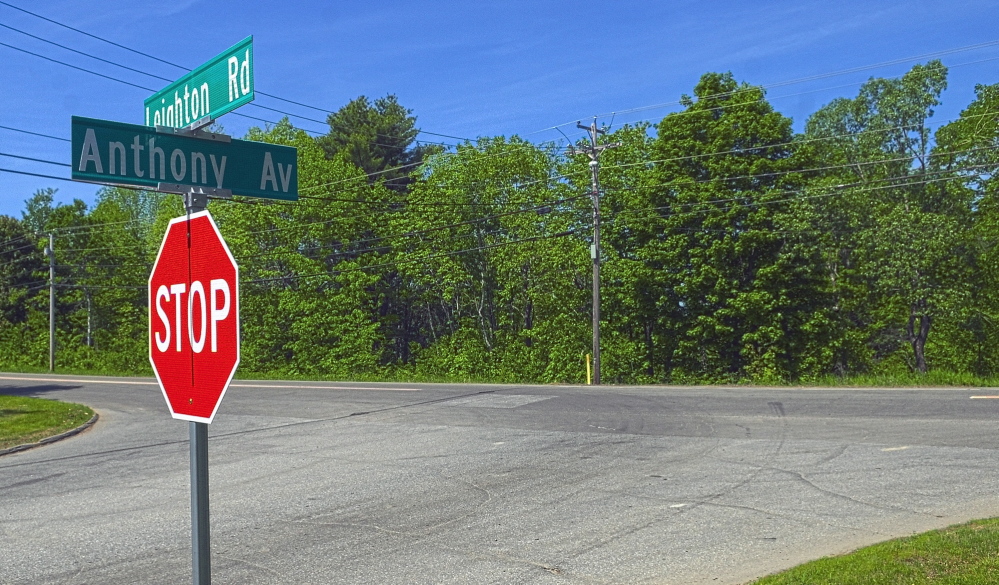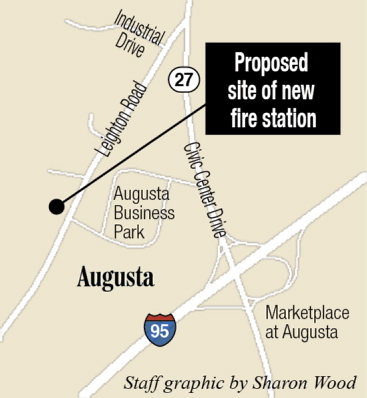AUGUSTA — A proposal to spend $9.6 million next year for major capital improvements, including $3.6 million to build a fire station in north Augusta and $1 million to replace the fire department ladder truck, goes to city councilors for discussion Thursday.
The proposed capital improvement plan would rely on $8.25 million in bonds which would, if approved by councilors, also need to be approved by voters in November.
However, if the plan and bonds to fund most of it are approved by councilors and residents, the $8.25 million in borrowing would have no impact on taxpayers, according to city officials.
Ralph St. Pierre, finance director and assistant city manager, said the debt on the $8.25 million in bonds would be paid back with funds collected in several city tax increment financing, or TIF, accounts.
The TIF money comes from revenue generated by projects including the Marketplace at Augusta, Central Maine Commerce Center, expansions at J.S. McCarthy and NRF Distributors and natural gas infrastructure.
TIFs are often used to give tax breaks to help businesses expand or lure them to move into municipalities by returning a percentage of new tax revenue generated by the new development.
But municipalities can also collect a portion of that new revenue to pay for allowed municipal projects.
And, St. Pierre said, the various TIF accounts, some of which have been collecting money for many years, are expected to provide enough funding and future revenues to pay back the $8.25 million in bonds without raising taxes.
“The bonds would go out to voters to be approved, then the debt would be paid by TIFs, with no impact on property taxes,” St. Pierre said. “This is really the year of the TIFs making an impact on capital improvement projects.”
By far the single most expensive item in the proposed plan now is the $3.6 million, three-bay fire station in north Augusta, proposed to be built on the vacant city-owned former Quimby lot at the intersection of Anthony Avenue and Leighton Road.
Fire Chief Roger Audette has said having a station in north Augusta would speed up response times to car accidents, fires and medical emergencies in the now-bustling commercial area that includes the Marketplace shopping center and Central Maine Commerce Center, and would be closer to the new MaineGeneral Medical Center.
St. Pierre said building a new station in north Augusta has been discussed for several years, and now the TIF districts in that part of the city are generating enough revenue to pay for the new station.
New property value sheltered in a TIF also doesn’t count toward a municipality’s total property tax value used by the state. That benefits the municipality, because when a municipality’s property value increases, its amount of state aid for schools and other state revenues drops, and its share of county taxes goes up.
Augusta’s TIF money, under the proposal going to councilors for discussion at 6:30 p.m. Thursday, would also pay back the debt that could be taken on to buy a new $1 million firetruck to replace the city’s approximately 25-year-old ladder truck.
Deputy Fire Chief Dave Groder said the truck would be a quint — a multi-purpose truck able to fill multiple roles. Augusta’s would be both a ladder truck and pumper and carry its own water.
Groder and St. Pierre said the city’s ladder truck needs to be replaced because it is old. St. Pierre said its hydraulic system has weakened from years of use.
Another major project proposed to be funded with TIF funds would pay for three new boilers, a gas turbine, new restroom plumbing, lighting and updating of the scoreboard at the city-owned Augusta Civic Center at a combined cost of $1.9 million.
About $1.2 million in other projects proposed in the 2015 capital improvement plan would not be funded by TIF funds. Most, including about $400,000 in paving, $121,000 to improve Mount Vernon Road, $60,000 to replace the gate and wooden palisades around Old Fort Western, and $60,000 to reconstruct basketball courts at Calumet Park on Northern Avenue in the city’s Sand Hill neighborhood, would be paid for with a possible $750,000 bond.
The city charter allows councilors to bond up to $750,000 in projects without seeking voter approval. Paying back the debt over the life of those bonds could, but won’t necessarily, impact property taxes.
Councilors are also scheduled Thursday to discuss a request from the Viles Foundation to change zoning so it can use the former home of the late Elsie and William Viles off Stone Street as a conference center; proposed changes to the Mineral Extraction Ordinance, which could remove “grandfathering” provisions of the ordinance for older gravel pits; street names likely including, according to City Manager William Bridgeo, Ballard Street and Ballard Road; and a committee recommendation to sell several vacant parcels of tax-acquired properties.
Keith Edwards — 621-5647
kedwards@centralmaine.com
Twitter: @kedwardskj
Send questions/comments to the editors.





Success. Please wait for the page to reload. If the page does not reload within 5 seconds, please refresh the page.
Enter your email and password to access comments.
Hi, to comment on stories you must . This profile is in addition to your subscription and website login.
Already have a commenting profile? .
Invalid username/password.
Please check your email to confirm and complete your registration.
Only subscribers are eligible to post comments. Please subscribe or login first for digital access. Here’s why.
Use the form below to reset your password. When you've submitted your account email, we will send an email with a reset code.